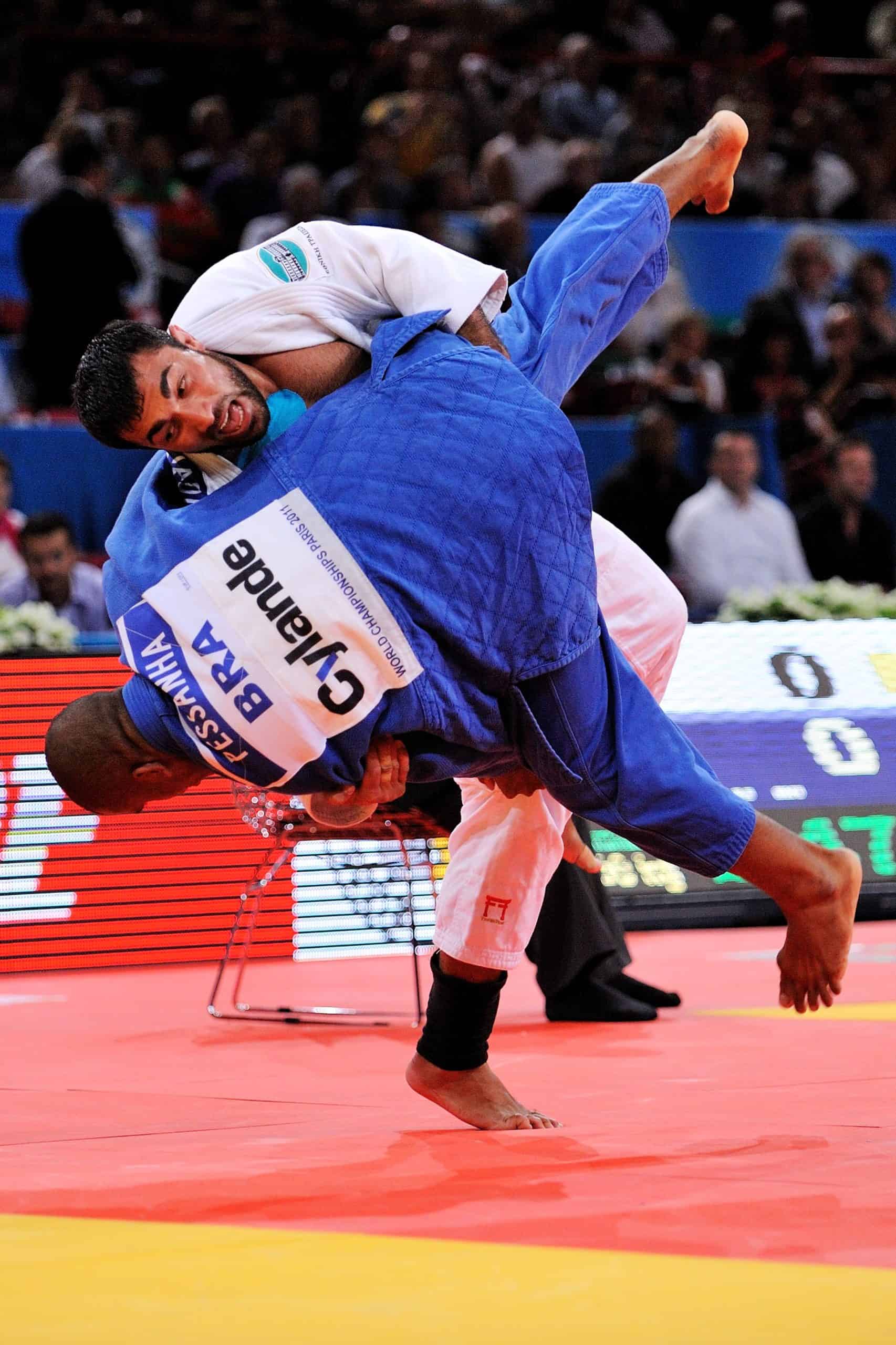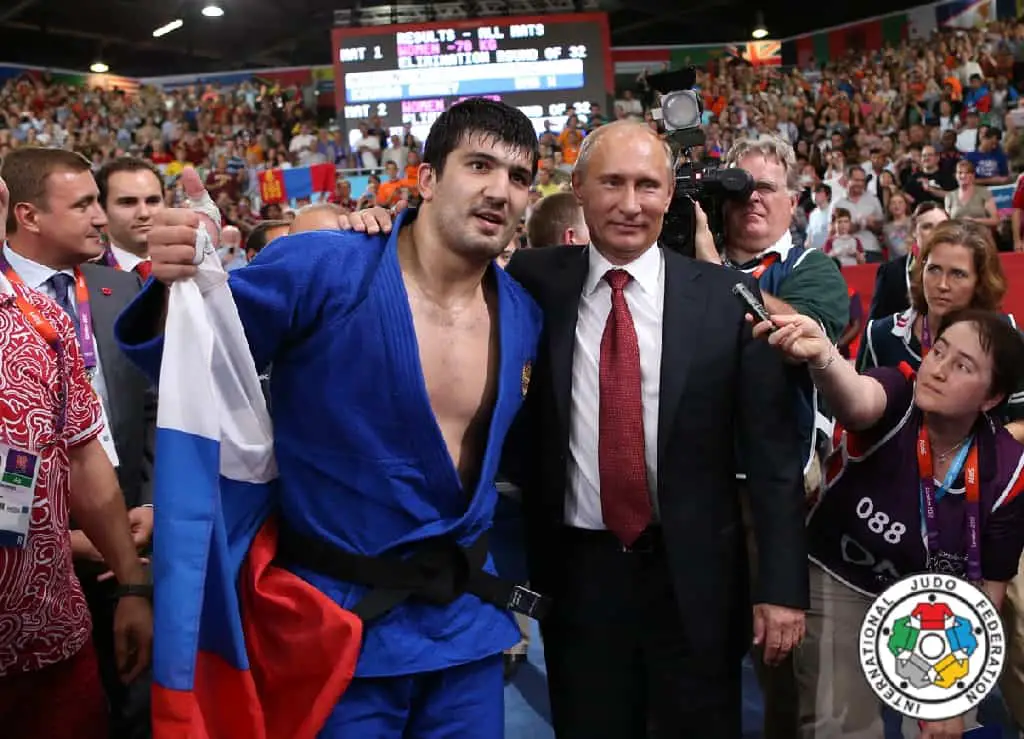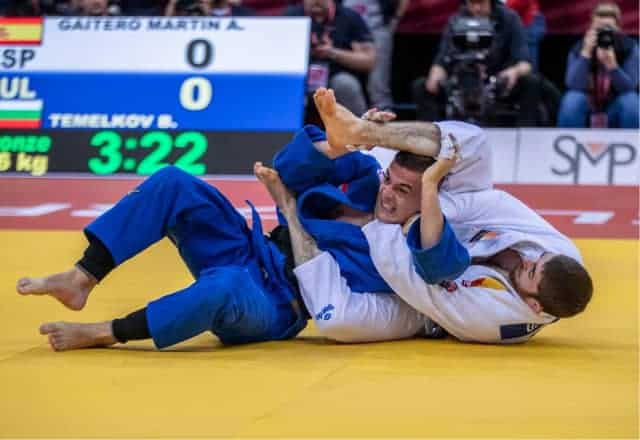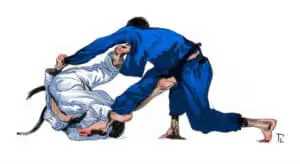Judo use to allow a much wider range of takedown techniques. However in 2010 the International Judo Federation (IJF) made a controversial decision to ban all leg grab takedowns such as double (Morote gari) and single legs (Kuchiki taoshi). The penalty for performing these takedowns was extremely harsh resulting in instant disqualification. In 2018 the infraction was reduced to result in a Shido.
Why Judo banned leg grabs? Judo banned leg grabs because the IJF wanted Judo to be distinct from wrestling. The IJF wanted to encourage an upright style of Judo which resulted in big classic throws. Certain Judoka were gaming the system by shooting double legs and then stalling if they failed resulting in boring matches. The IJF countered this strategy by banning leg grabs.

Maintaining A Distinction From Wrestling

The key reason why Judo banned leg grabs was because the IJF wanted to ensure that Judo remained distinct from wrestling. This was because the IOC was threatening to remove Judo from the Olympics because it deemed Judo and wrestling were too similar. To protect Judo’s Olympic sport status the IJF came up with a way to make Judo look more distinct from wrestling. By banning the most popular techniques in freestyle wrestling Judo could show the IOC that Judo was significantly different from freestyle wrestling.
As the years progressed Judo matches were looking too similar to freestyle wrestling matches where Judokas would shoot a double or single leg, score a point and then run out the clock. The IOC noticed this and threatened the IJF that this problem needed to be addressed or Judo risked losing its Olympic sport status.
Promoting A Certain Style Of Judo
The IJF wanted to promote classical Judo where athletes would stand up tall, would turn their backs to throw and win matches with powerful Ippons resulting from big throws such as Uchi-Mata. This was the classic style of Judo taught in Japan and what the IJF wanted to promote around the world. The IJF wanted Judo matches to be aggressive flashy contests where both athletes were attacking the whole match attempting to throw each other on their backs.
From 2004-2009 Judokas had developed a strategy based around single and double leg takedowns which was totally against the style of Judo the IJF wanted to promote.
Following the leg grabbing rule changes The IJF hired Thierry Loison to do statistical analysis of World Championships and the Olympic Games to prove how successful the leg grab ban had been. Loison studied the different techniques athletes used and their attempt and success rates.
Loison found that, “Before rules changed, especially on grabbing the leg, the reproach made to athletes was they did not turn their backs any more. It is no longer the case, as now 79% of techniques involve athletes turning their back to try to throw.”
Attacks at the Rio Olympics which did not allow any leg attacks had a 11% success rate, while a counter attack had a huge 30% success rate. One can imagine how low the initial attack success rate and how high the counter attack success rate would have been if leg attacks such as Morote gari, Te-guruma and Kuchiki taoshi had been allowed. It is not unreasonable to think the initial attack success rate would have been as low as 7% and the counter attack success rate as high as 40-50%. This reality creates a situation where neither athlete has an incentive to attack and both athletes sit back waiting to counter each other. This creates very boring matches where neither athlete is aggressive and neither athlete attempts to throw.
The IJF decision’s to ban all leg attacks may have been extreme and unpopular but it was effective in getting athletes to attempt more throws and not to stall which has created significantly more exciting and fan friendly Judo matches.
Penalizing A Particular Judo Strategy
Judo matches looked more and more like jacketed freestyle wrestling contests. The typical Judo match would feature Judokas grabbing each other’s legs, attaining a minor score and then stalling out the rest of the match. Judo in the early 2000s was bow, establish a grip, shoot a takedown, score a point and then shut down all offense for the remainder of the contest and being just aggressive enough to avoid a Shido penalty.
A single or double leg rarely resulted in an Ippon or Waz-ari. Coaches and athletes developed a strategy around just doing enough to win based on repeatedly shooting takedowns until achieving a minor score and then stalling. This strategy had caused Judo to its identity and matches from 2004-2009 were particularly boring with limited amount of two way aggressive action and a lack of big throws.
Instead of banning all leg attacks the IJF could have simply banned the leg grabbing techniques which were unlikely to earn an Ippon and which had the highest counter rate.
Preventing The Domination Of Russian And Mongolian Judokas

There is a conspiracy theory that the IJF banned leg grabs to stop Russian and Mongolian Judokas who were particularly strong in leg grabs from succeeding. The IJF which is biased towards Japan was accused of being pressured by Japanese officials to adapt the rules so Japanese Judokas who were much stronger in throwing techniques but weaker in leg grabs compared to Russian and Mongolian athletes would have a greater chance of winning medals.
There is little evidence of this being true. Freestyle wrestlers and Sambo athletes from Russia were not simply showing up to high level Judo tournaments shooting some double legs and winning gold medals. Even though the rule change did penalize Russian and Mongolian Judokas who used leg grabs effectively it was an unfortunate by product of the rule changes and was not a motivator. Russian and Mongolian athletes have adapted to the new rule changes and are still strong Judo nations.

The Refusal Of The IJF To Promote Ne-Waza
The IJF could have chosen another strategy to counter the leg grab stalling strategy. The IJF could have allowed athletes to engage in much longer Ne-Waza battles. If an athlete knew every time they failed a double leg takedown they would have to defend against prolonged Ne-Waza attacks this would stop athletes from spamming low percentage leg grab takedowns. The IJF did not want to promote Ne-Waza as they thought it was not crowd pleasing and would not help grow the popularity of Judo.
By promoting Ne-Waza the IJF would also appease the IOC by making Judo increasingly distinct from wrestling. In wrestling all submissions are banned and the guard position is not viable due to back exposure points and pinning rules. Judo which included a higher amount of Ne-Waza would ensure Judo looked a lot different to wrestling preventing its Olympic status from being threatened.

Conclusion
The IJF banned leg grabs to make Judo distinct from freestyle wrestling to prevent the sport from losing its Olympic status. Judokas had created a strategy based around shooting double and single legs, scoring a point and then stalling the rest of the match. The IJF recognized this strategy and banned leg grabs to stop athletes from using it. The IJF wanted to promote a fan friendly classic style of Judo which emphasized big throws. Leg grabs prevented this from happening as the counter attack success rate was so high neither athlete wanted to attempt an attack. By removing leg grabs the initial attack success rate went up while the counter attack success rate decreased. There was a theory that the IJF wanted to penalize Russian and Mongolian athletes who had successfully used leg attacks however there is no evidence for that happening and both nations have successfully adapted to the new Judo rules.
